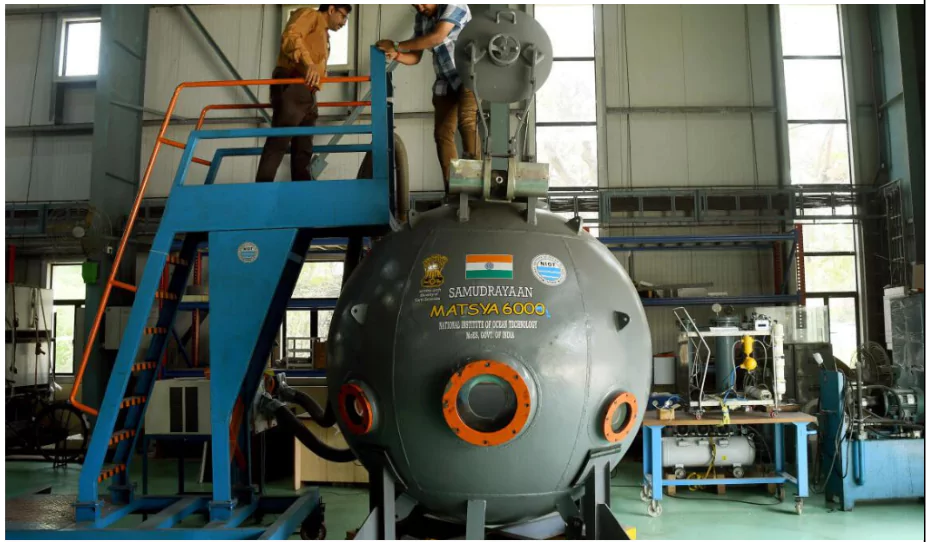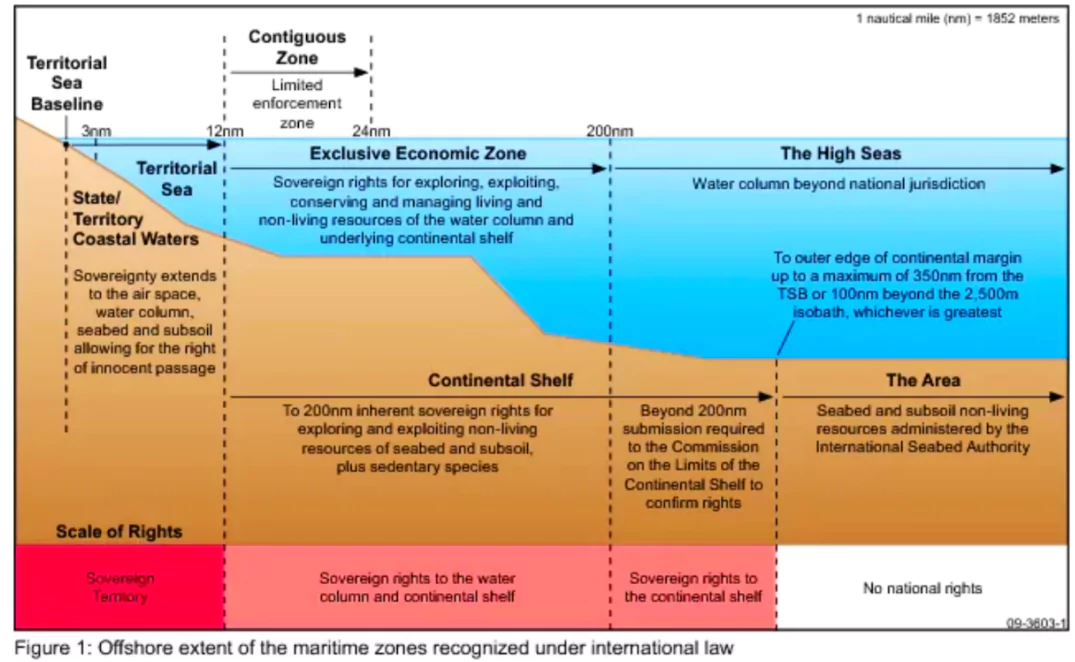India is set to be the 6th country to have its own deep-sea mission. India’s first manned submersible ‘Matsya 6000’ to explore secrets of deep sea
More on News
- The other 5 countries are – France, the US, China, Russia and Japan.
- 1st Stage of harbor trail (40-50m) deep sea mission planned by September 2024.
- MATSYA 6000 submarine is going to play a critical role in the Deep Sea Mission.
About Deep Ocean Mission (DOM)
- DOM is India’s ambitious programme, chiefly implemented by the Ministry of Earth Sciences (MoES).
- DOM was approved by the Union Cabinet in 2021 over a five-year period in a phased manner.
- The mission will require technologies to access and transport tonnes of valuable minerals from the ocean-bed in an environmentally safe manner.
- DOM is one of nine missions under the Prime Minister’s Science, Technology, and Innovation Advisory Council (PMSTIAC).
Enroll now for UPSC Online Course
Matsya6000:
- Matsya6000 is India’s flagship deep-ocean human submersible that aims to reach the ocean bed at a depth of 6,000 m.
- Accompanied by three crew members, called “aquanauts”, the submersible carries a suite of scientific tools and equipment designed to facilitate observations, sample collection, basic video and audio recording, and experimentation.
- The vessel is being developed by Chennai’s National Institute of Ocean Technology (NIOT).
- Constructed from a titanium alloy, the sphere is engineered to withstand pressures of up to 6,000 bar.
- With Matsya, India will be the only country to have an entire ecosystem of underwater vehicles encompassing deep-water ROVs, polar ROVs, AUVs, deep-water coring systems, and more.

|
The Mission has Six Pillars
- Technological Development: Development of technologies for deep-sea mining and a manned submersible – Matsya6000 to carry three people to a depth of 6,000 metres in the ocean.
- The submersible will be equipped with a suite of scientific sensors, tools and an integrated system for mining polymetallic nodules from the central Indian Ocean
- Development of Ocean climate change advisory services: It involves an array of ocean observations and models to understand and provide future climate projections
- Technological innovations for the exploration and conservation of deep-sea biodiversity
- Deep-ocean survey and exploration: It aimed at identifying potential sites of multi-metal hydrothermal sulphides mineralisation along the Indian Ocean mid-oceanic ridges
- Harnessing energy and freshwater from the ocean
- Establishing an advanced Marine Station for Ocean Biology: Establish it as a hub for nurturing talent and driving new opportunities in ocean biology and blue biotechnology.
Environmental Concerns
- Threat to Ecosystem: Only a small part of the deep seabed has been explored and conservationists worry that ecosystems will be damaged by mining, especially without any environmental protocols.
- Associated Damages: Noise, vibration and light pollution, as well as possible leaks and spills of fuels and other chemicals used in the mining process.
- Harm to Marine Life: Once valuable materials are extracted, slurry sediment plumes are sometimes pumped back into the sea. That can harm filter feeding species like corals and sponges, etc.
Check Out UPSC Modules From PW Store
The United Nations Convention on the Law of the Sea (UNCLOS)
- It is an international agreement adopted in 1982 that establishes the legal framework for marine and maritime activities.
- It is also known as Law of the Sea.
- It divides marine areas into five main zones namely- Internal Waters, Territorial Sea, Contiguous Zone, Exclusive Economic Zone (EEZ) and the High Seas.

![]() 20 Jun 2024
20 Jun 2024

